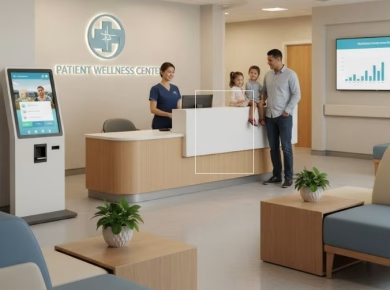Keeping data safe sounds huge and scary, but it comes down to clear rules and proof that a company follows them. Two names come up again and again: ISO 27001 and SOC 2. People toss those terms around in meetings, and it can feel confusing. Here is a simple way to see what they mean and how to decide which one fits best.
The quick answer in plain words
ISO 27001 is a global standard for building and running a full security program, called an Information Security Management System. It is a certification from an accredited body that checks the whole system, not just a few controls. SOC 2 is an audit report from a licensed CPA firm that checks the controls a company designed to meet the Trust Services Criteria. It is not a “certificate,” it is an attestation, and buyers often ask to see the report under a non disclosure agreement.
People compare these two all the time, which is why iso 27001 vs soc 2 shows up so often in security chats and vendor forms. The names look similar, but they solve slightly different problems.
What each one checks, and how it feels in real life
Think of ISO 27001 as the blueprint and daily routine for keeping information safe. It pushes a company to set a scope, assess risks, choose controls to treat those risks, write policies, train people, and keep improving. Auditors do a Stage 1 review to see if the system is designed well on paper, then a Stage 2 review to test if it works in practice. If it passes, the company gets a certificate that lasts three years, with check ins every year.
SOC 2 starts from a different angle. A company picks which Trust Services Criteria to cover. Security is required. Availability, confidentiality, processing integrity, and privacy are optional. The company designs controls to meet those criteria. An independent CPA tests those controls and writes a report with an opinion. Type I looks at a single date to see if controls were in place. Type II looks over a time window, often three to twelve months, to see if controls worked over time. The report is for customers and prospects, usually shared under NDA.
Where each is strongest
ISO 27001 is known around the world. Buyers in the UK, the EU, and many other regions recognize it as a solid sign that a company runs a mature security program. It lines up well with risk based thinking and supports privacy rules like GDPR by pushing strong governance, even though it is not a privacy law by itself.
SOC 2 is very common in the United States. Many sales deals for cloud products in North America ask for a current SOC 2 Type II report. Security teams in those firms have vendor portals that ask about the Trust Services Criteria, so a SOC 2 fits right in. The report also gives detail on exactly what the company does to protect data, which helps risk teams make a call.
ISO 27001 vs SOC 2: The core differences that really matter
Scope and shape. ISO 27001 is about the whole security management system. It includes leadership roles, risk registers, a Statement of Applicability, internal audits, and a cycle of improvement. SOC 2 is about controls mapped to the criteria, such as access control, change management, logging, and incident response. There is a narrative section that describes the system, but the focus is on controls and evidence.
Outcome. ISO 27001 gives a certificate from an accredited body. SOC 2 gives an attestation report from a CPA with an opinion, often “unqualified” when things are good. They are both strong, just different in what you hand over.
Control catalog. ISO 27001 points to Annex A controls, which were updated in 2022 and group into domains. A company decides which ones apply and explains why in the Statement of Applicability. SOC 2 does not prescribe exact controls, it sets criteria and lets the company design controls that meet them.
Sharing proof. ISO 27001 certificates can be shared widely and even posted on a site. SOC 2 reports are longer and include details that bad actors could use, so they are shared under NDA and handled with care.
How long each takes, and what it costs in effort
Time depends on size, current maturity, and how clean evidence is. Many teams reach a SOC 2 Type I in a few months. Type II needs an observation period, so the full cycle often takes more than half a year. ISO 27001 projects often run six to twelve months to design the system, roll out training, and pass both audit stages. After that, there are yearly surveillance audits and a recert in year three.
Effort is not just the audit days. It is the daily work of keeping access reviews current, patching on time, logging changes, testing backups, running incident drills, and checking vendors. Tools can help, but people and habits are what pass audits.
What both expect to see day to day
Both expect strong basics. Unique accounts, multi factor login, role based access, and quick removal when someone leaves. Change tracking for code and systems. Clear approval steps before changes go live. Good logging and alerting. A plan for incidents with roles, playbooks, and post mortems. Vendor checks with contracts and ongoing monitoring. Encryption in transit and at rest. Secure development steps, such as code review and scanning.
The mix is similar, but the lens is different. SOC 2 Type II leans into how well those controls worked over months. ISO 27001 leans into whether the chosen controls fit the risks and whether the management system keeps improving.
Which one is “better” depends on who asks to see it
Pick based on who the customers are, where they are, and what they ask for.
If most buyers are in the US, and they keep asking for a recent Type II report, SOC 2 lands faster in their inbox and answers their vendor forms. If the goal is to sell across the UK and EU, or to larger global firms, ISO 27001 can open doors and signals a mature program to a wider audience.
If sales needs something fast to keep deals moving, a SOC 2 Type I can help, but many buyers want a Type II. If the company wants a strong, top to bottom program with a steady rhythm, ISO 27001 builds that structure and keeps it on track for years.
Some teams do both. A common path is to build the core controls and evidence for SOC 2 Type II, then use that momentum to add the policy and governance pieces needed for ISO 27001. Others start with ISO 27001 to lock in process, then stack a SOC 2 on top to serve US buyers. The order depends on where customers sit and what they ask for in contracts.
Red flags that slow everything down
A few things trip teams up. Shared admin accounts without clear owners. Manual steps with no record of who did what. Access reviews that happen once and then vanish. Missing test results for backups and disaster recovery. Change approvals in chat with no durable log. Policies that exist only in slides, with no training or tracking. Any of these can hurt both a SOC 2 and an ISO 27001 effort.
A simple way to decide
Ask four questions.
- Who is buying, and where are they based?
- What do recent deals ask for in writing?
- How fast is proof needed to win or renew those deals?
- How ready are the current controls, evidence, and policies?
If most deals need a SOC 2 Type II in the next few months, aim for that first. If global brands or public sector buyers are the goal, and there is time to build a full system, ISO 27001 may be the smarter first step. If there is budget and a clear plan, do both in a smart order so one lifts the other.
What the audits look like from the inside
For ISO 27001, expect interviews with leaders, review of the risk register and Statement of Applicability, checks that policies match practice, and samples of records like access reviews and incident logs. Stage 1 is about design and readiness. Stage 2 is about real operation. After certification, expect yearly visits to confirm the system still works.
For SOC 2, expect a walkthrough of the system description, then evidence requests for each control. The auditor will sample tickets, pull change records, look at login reports, and review logs. For Type II, those samples come from the whole period. Gaps and exceptions need clear fixes and proof that the fix worked.
Common myths, cleared up
“ISO 27001 is only for big companies.” Not true. Small teams can certify a narrow scope and grow over time.
“SOC 2 is only for tech.” Also not true. Any service firm that handles customer data can use it.
“Doing one means the other is pointless.” They overlap, but each helps with a different crowd and a different kind of proof.
Key takeaways and what to do next
ISO 27001 and SOC 2 both raise the bar for security, but they do it in different ways. ISO 27001 is a full management system with global reach and a certificate that lasts three years, with steady checks. SOC 2 is an attestation report that speaks the language many US buyers use in risk reviews. The best choice depends on customers, timing, and how ready the team is today. Look at who asks for what, map out the gaps, and pick the path that helps real deals without cutting corners. If questions come up while choosing, bring them forward. It is easier to make a clear plan together than to guess and hope it lands.
Read Next:
Top Simple Cyber Security Tips for Small Businesses







